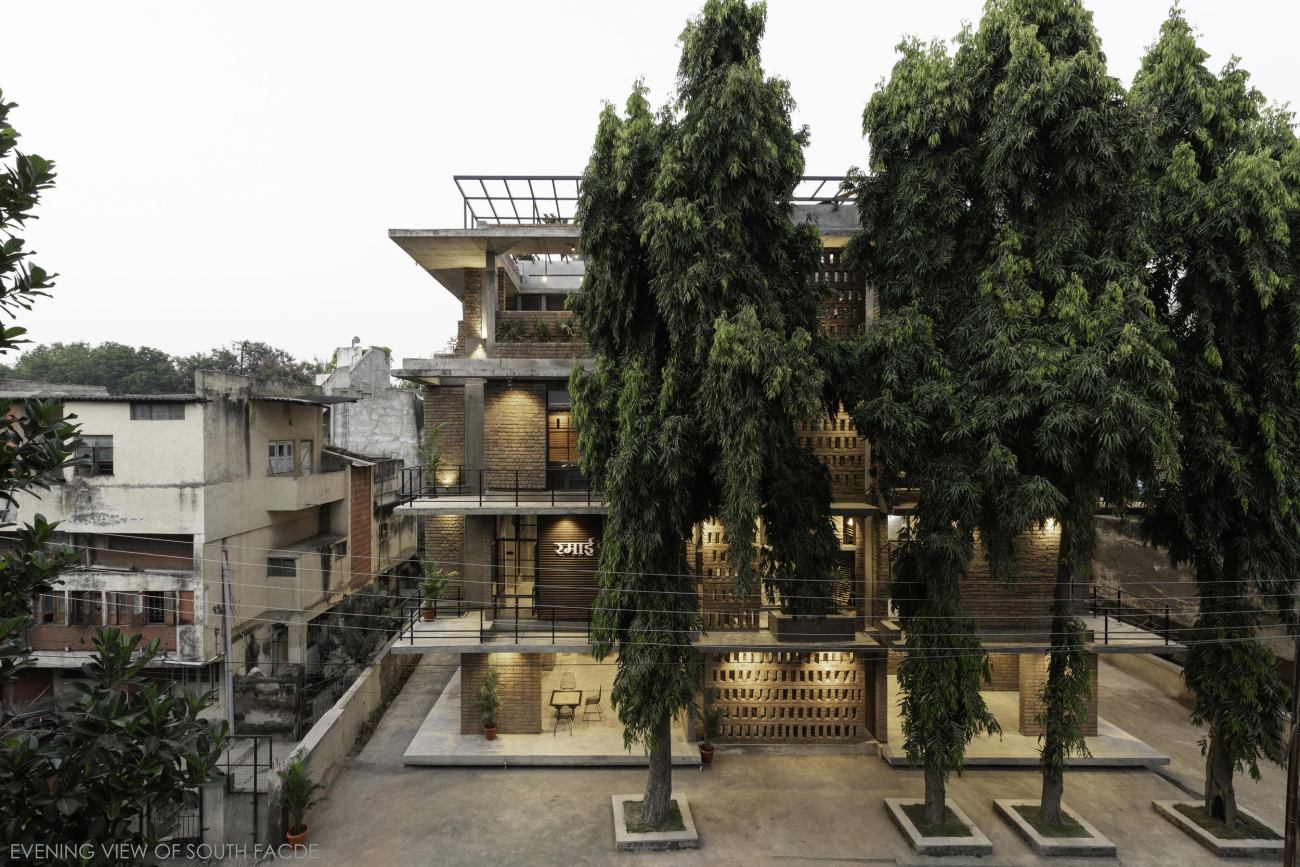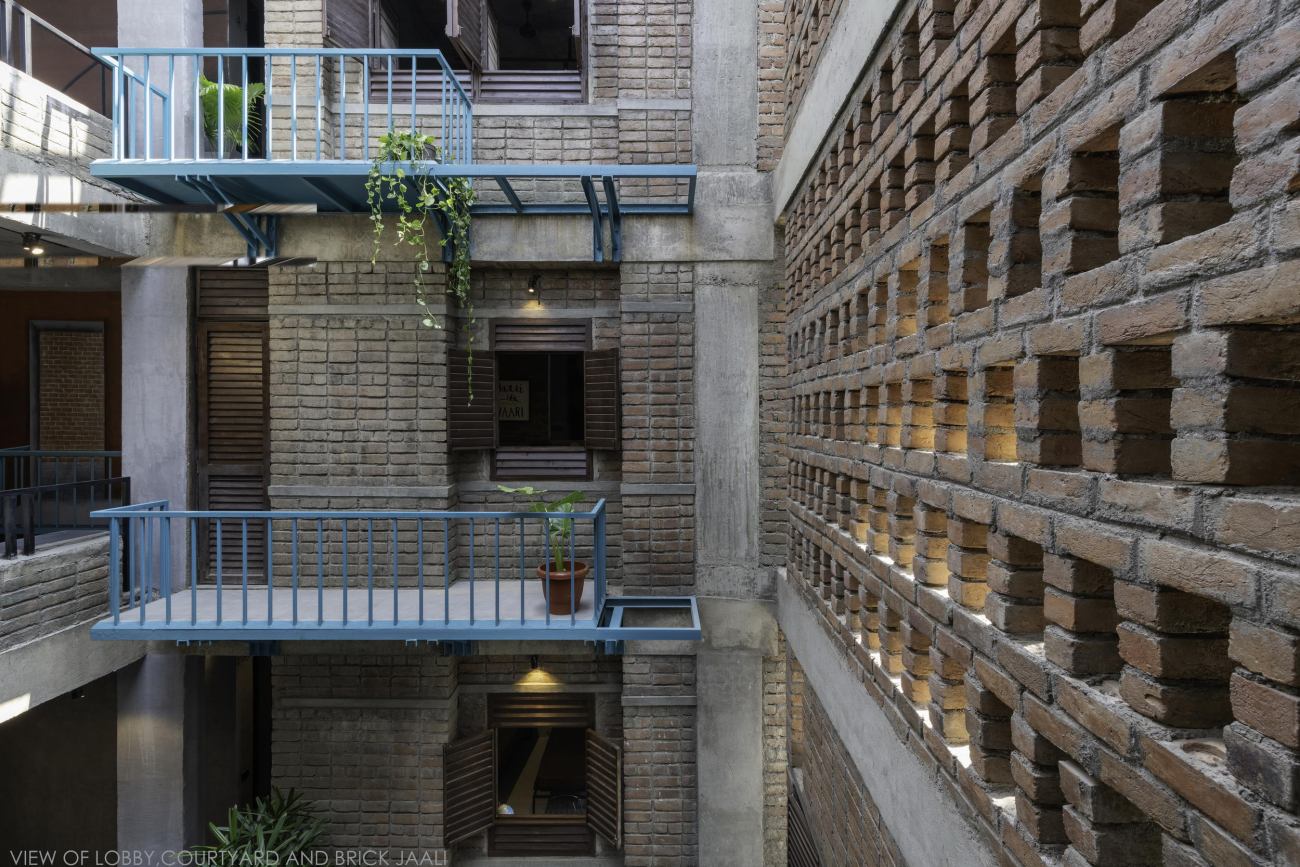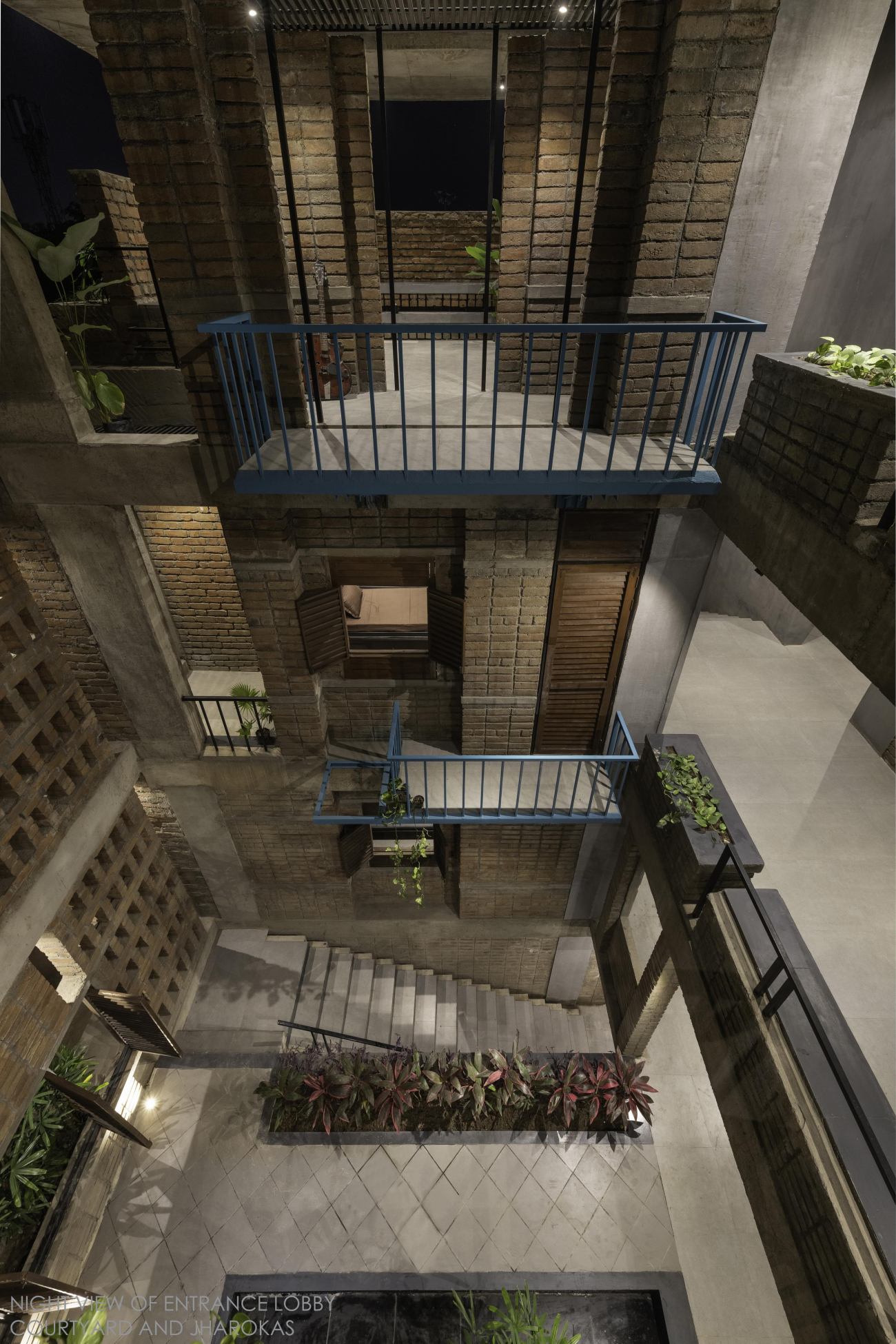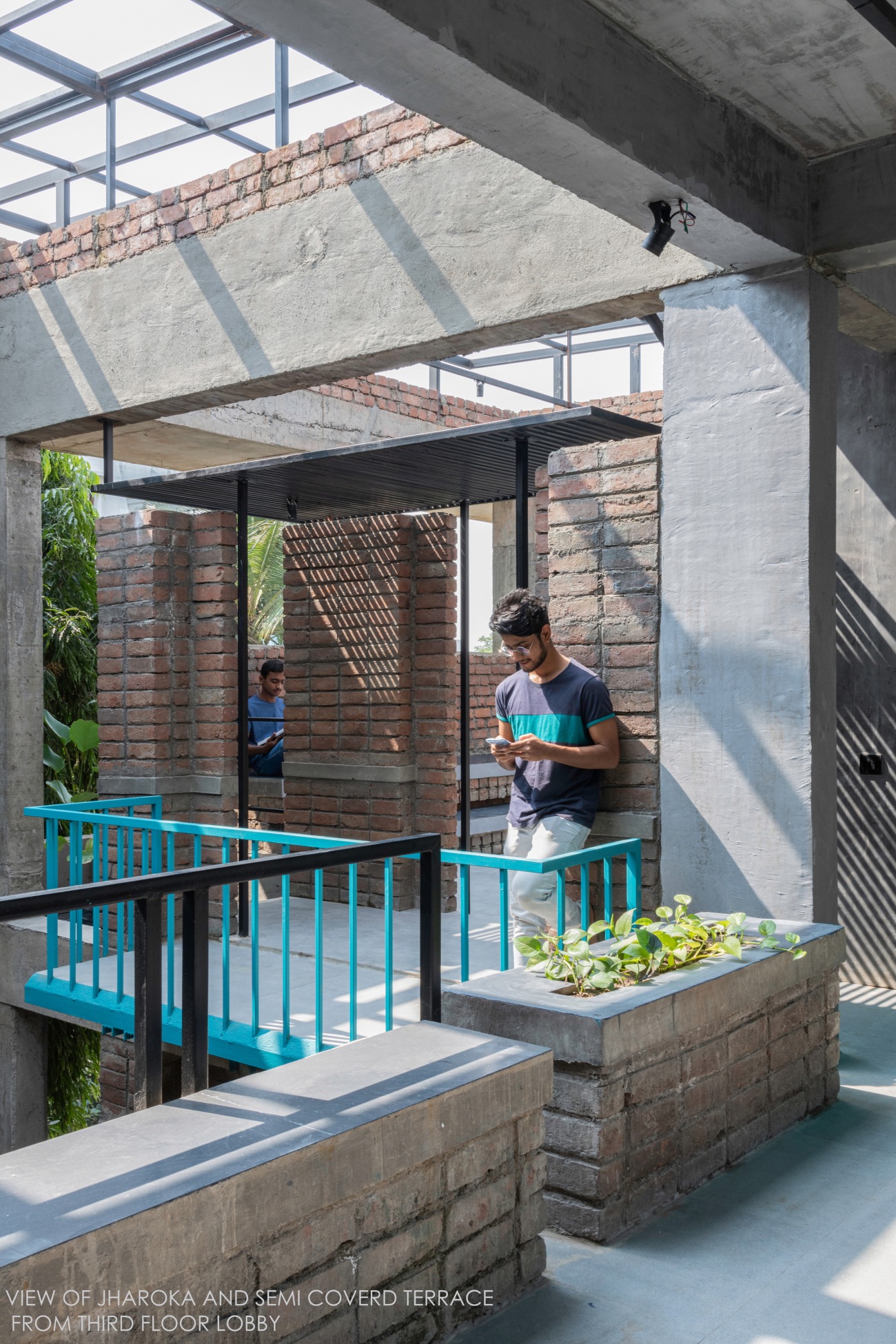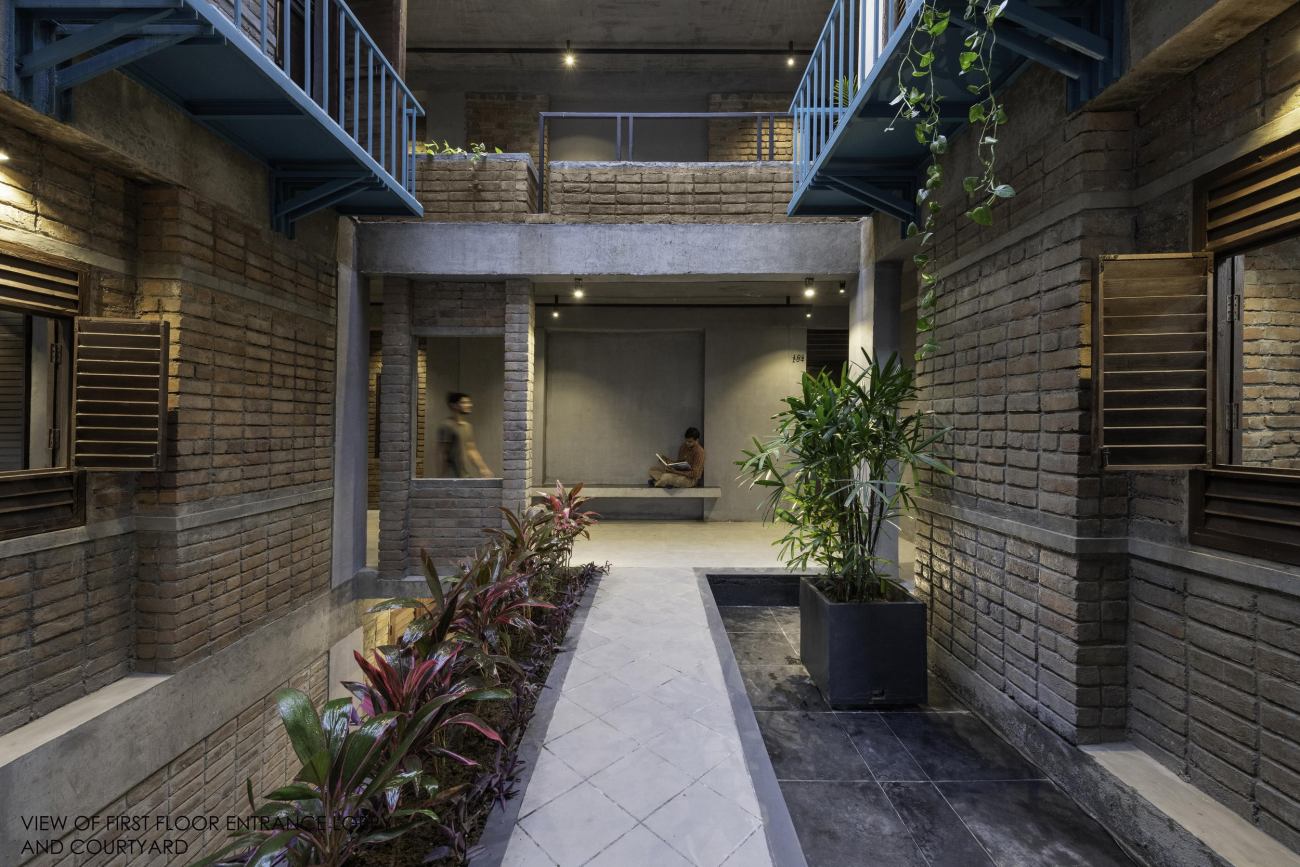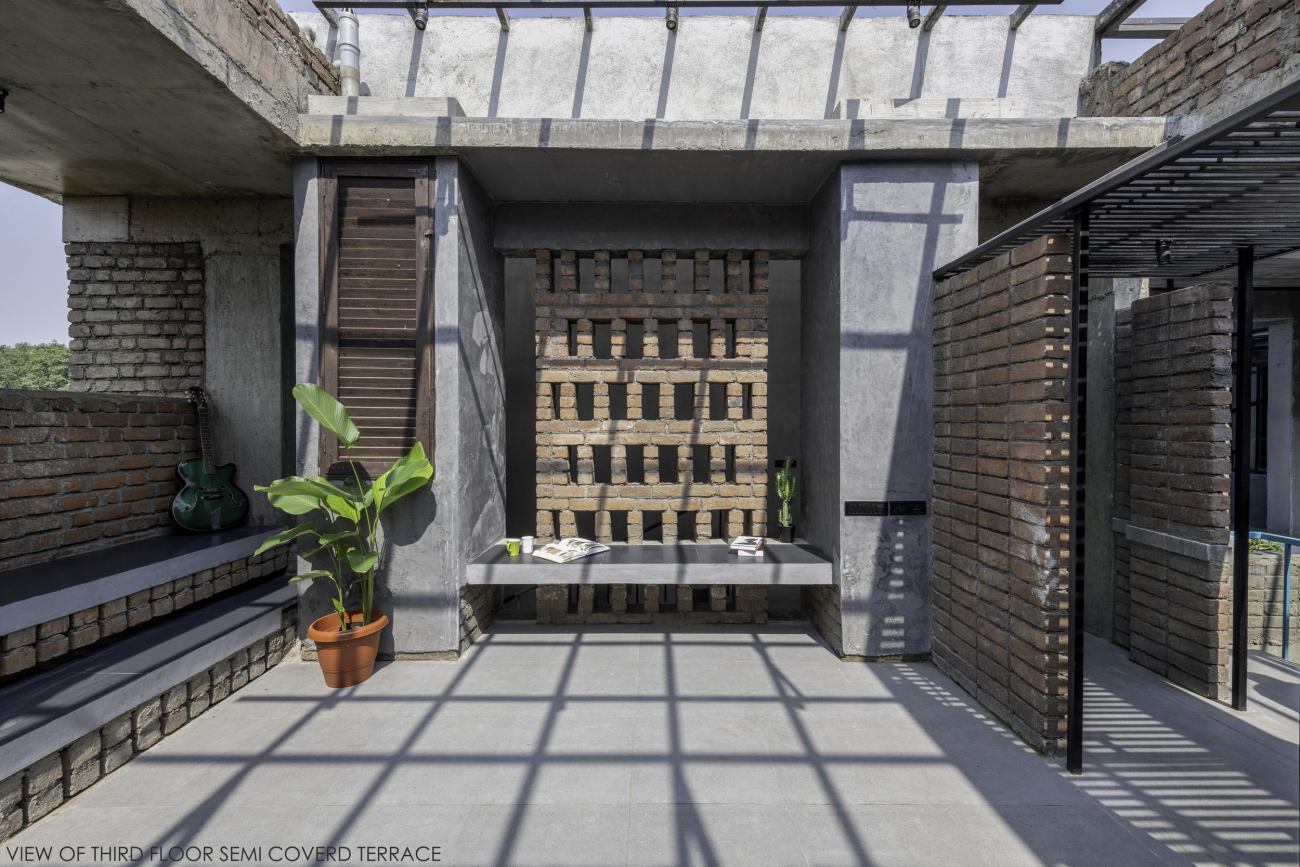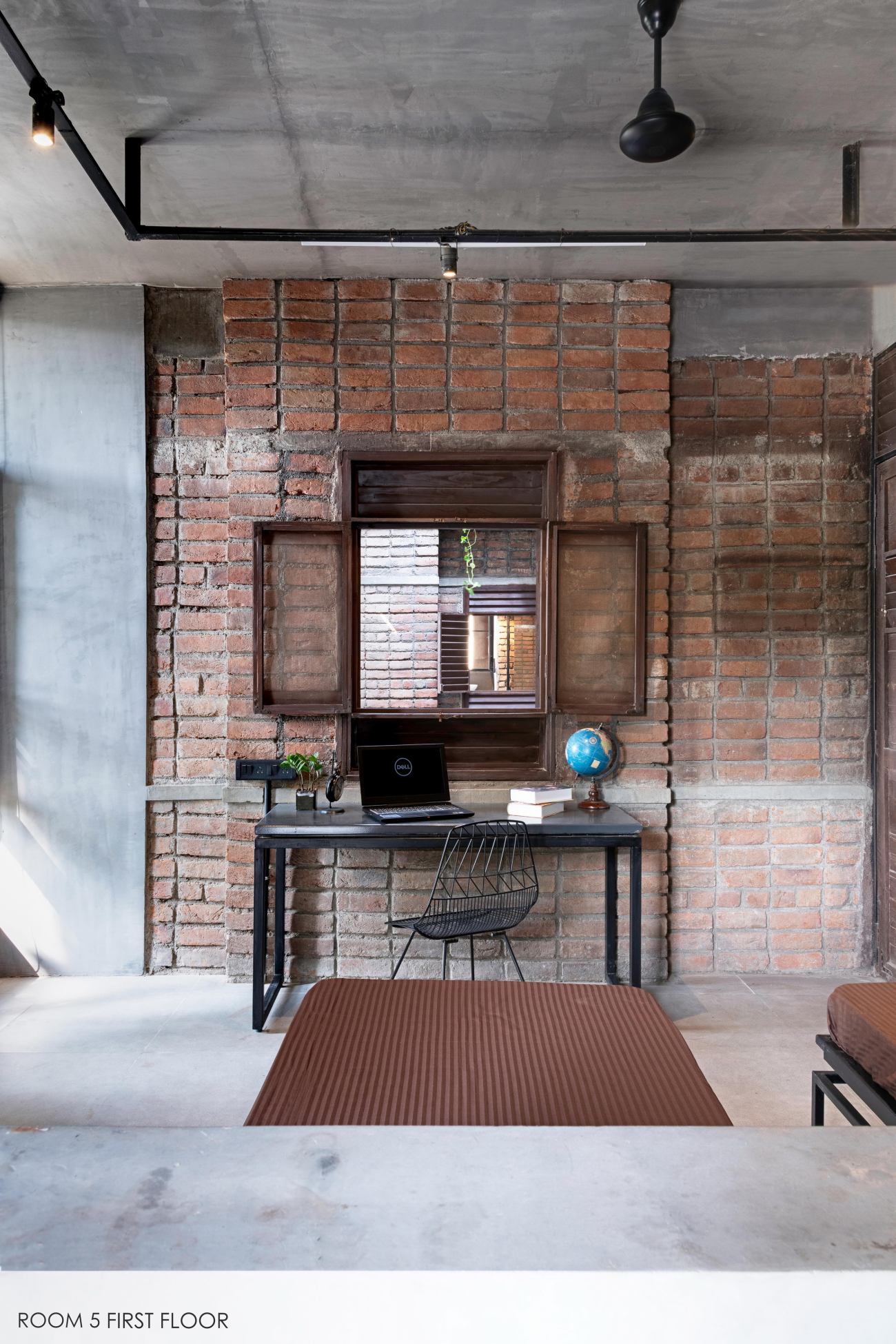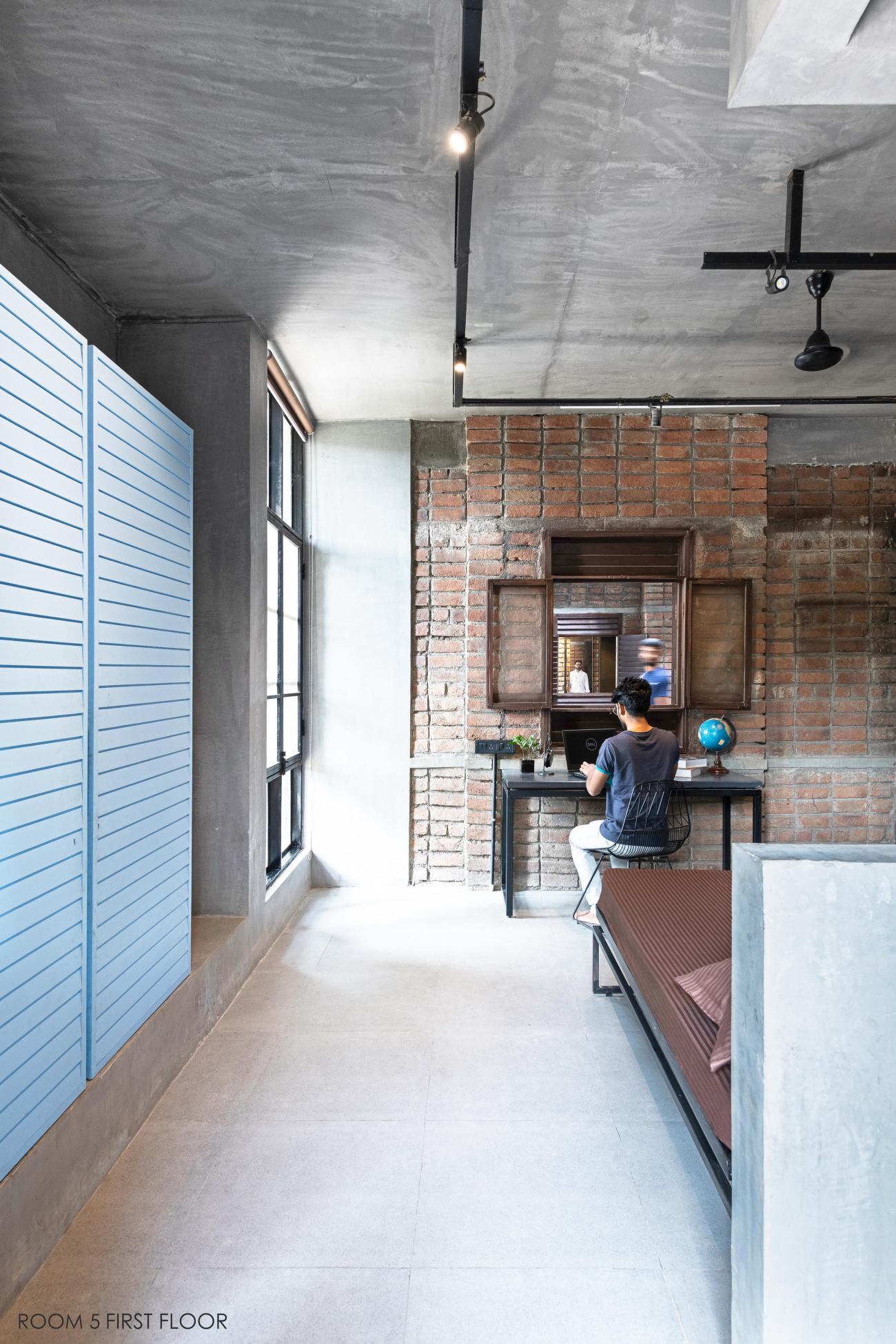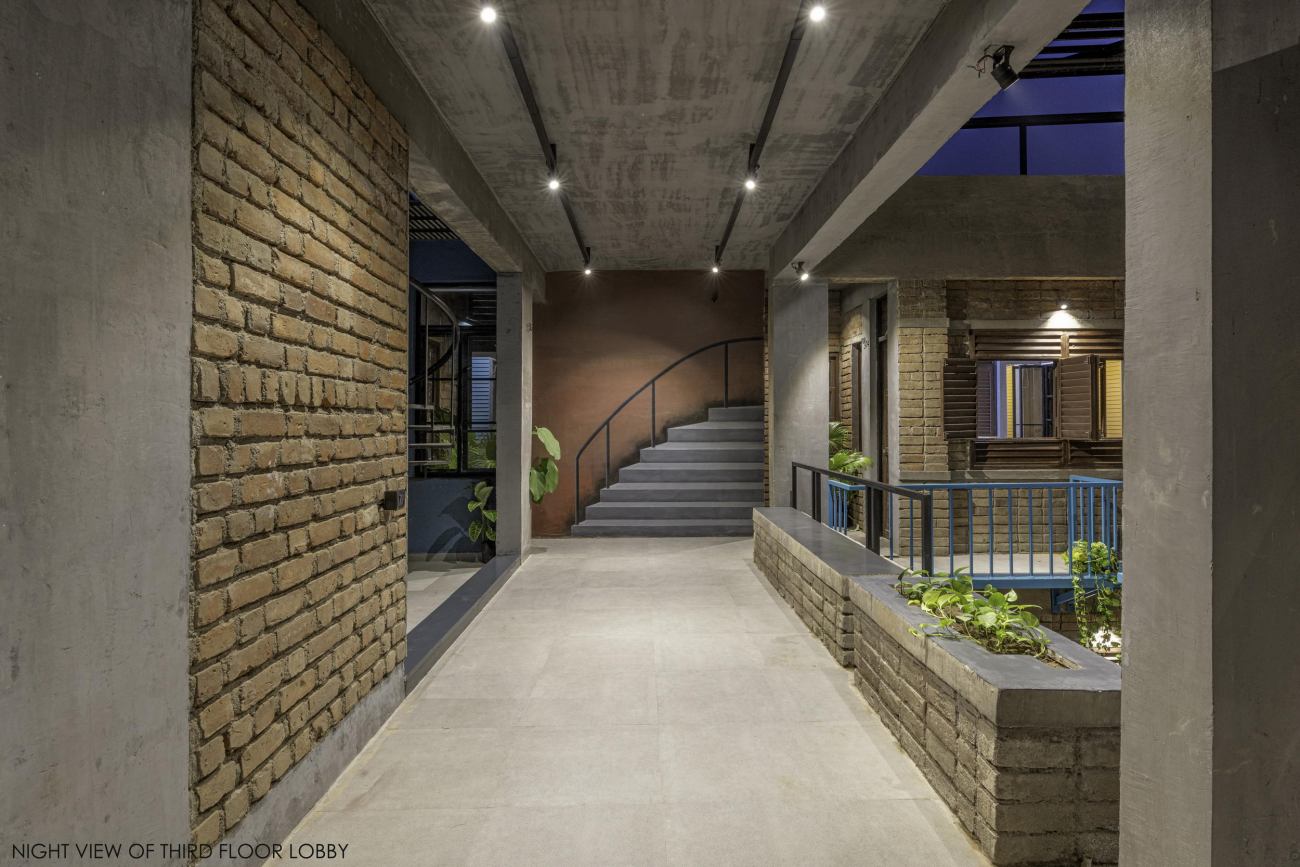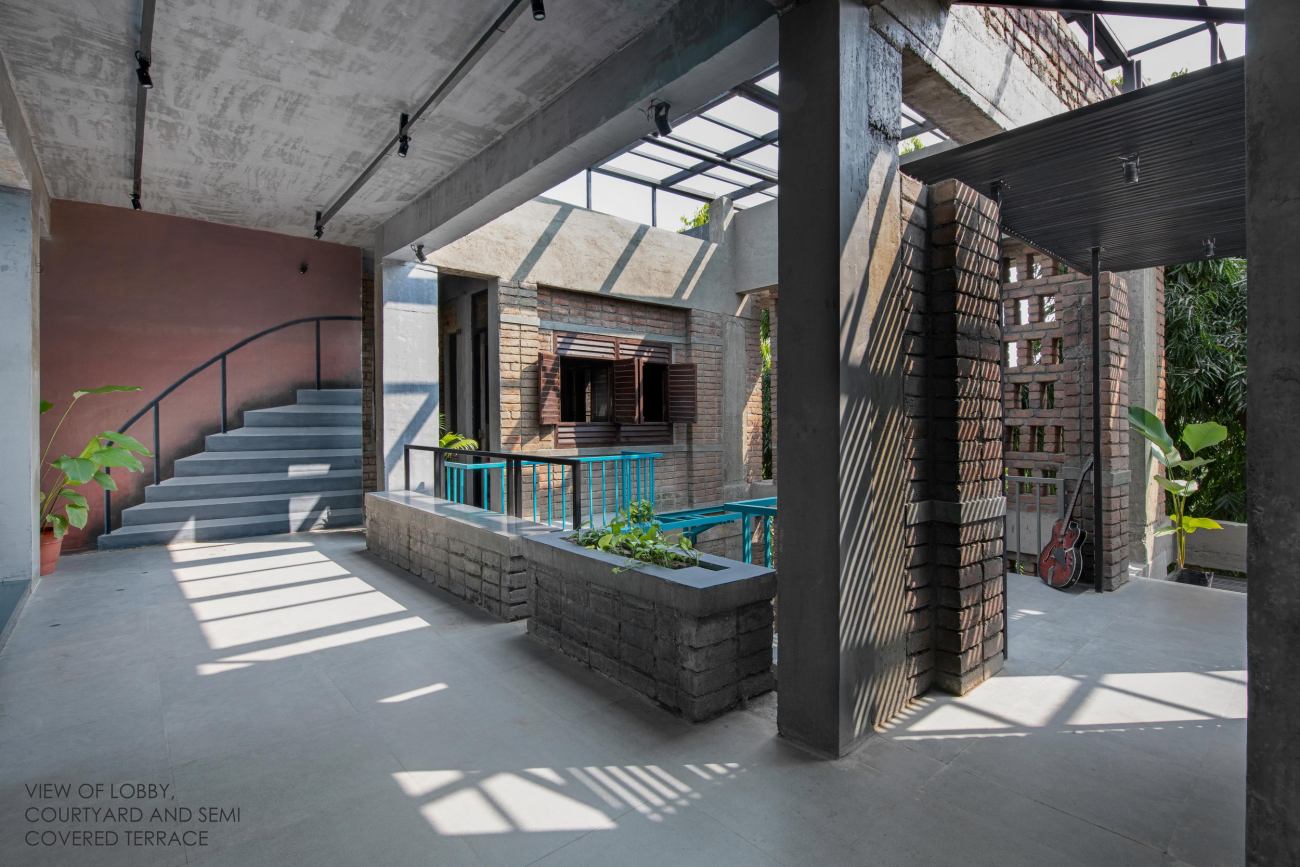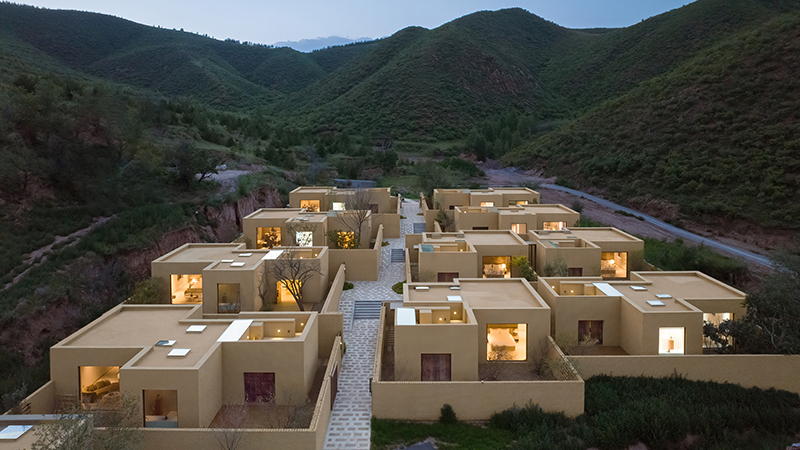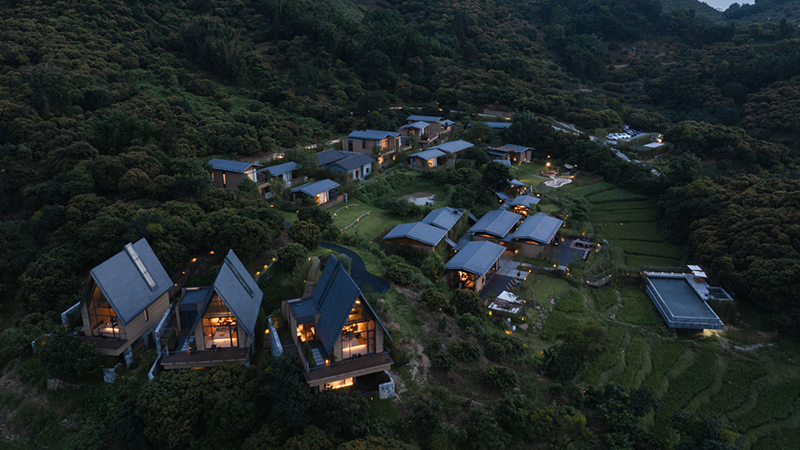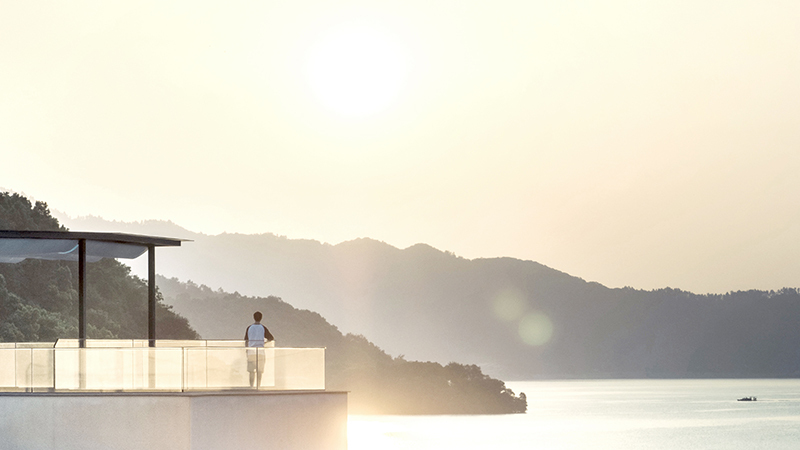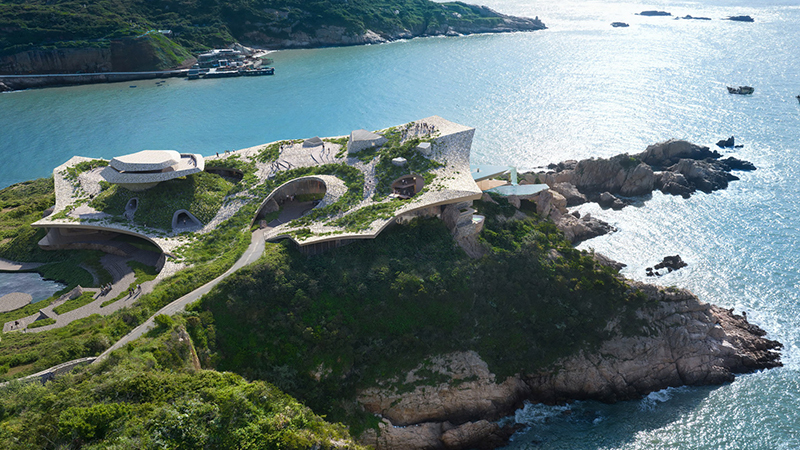| 公司: | Amruta Daulatabadkar Architects | 类型: | 建筑 |
|---|---|---|---|
| 地区: | 印度 | 标签: | 酒店 |
团队计划在混乱的居住区中创造一个向内互动的环境,以供学生居住。设计过程中的关键是增强学生们的互动,让室内空间向外渗透并与周围景观产生互动。
To create an interactive and inward looking environment in a chaotic residential surrounding for the students to live in. The key factor in the design process was to enhance students interaction, within the indoor spaces that percolates outward and interacts with the landscape around it.
场地特色Site Characteristics
团队幸运地在场地发现了许多现有树木,南立面有四棵阿育王树,西北侧的鱼尾棕榈树(按照设计在建筑物内维持),西北角的杏仁树。这些树木都被保留。
We were blessed with existing trees, four Ashoka trees on south facade, Fish tail palm on the north-west side (which is sustained inside the building as per design), Almond tree on north-west corner. All the above trees are sustained.
空间定位和规划Spatial Orientation and planning
俯瞰庭院的房间和大堂,规划变得容易。楼梯连接x轴上的阁楼,以及y轴上的开放式露台和庭院。
Planning has been made simple, by planning rooms and lobby overlooking the courtyard. And staircase connectinglobby on x- axis, along with open terrace and courtyard on the y-axis.
楼面板The Floor plate
楼板由底层、一层、二层和三层组成。 底层:入口、办公空间、看守室、拟建的健身房、商店和看守室。一层:庭院,卧室;二层:卧室;三层:客房、半遮蔽式露台和通向天空的露台。
Floor plate consists of plinth, first, second and third level. Plinth- Entrance, office space, watchman room, proposed gym, shop and warden’s room. First floor- Courtyard, rooms, Second floor- Rooms, Third floor- Rooms, semi covered terrace and open to sky terrace.
通过在从一楼到露台板的类似地板上雕刻出小切口,为街区赋予特性。类似地板上的墙壁洗牌创造了独特的房间布局,并为所有侧立面提供了不同的深度。房间的开窗是根据现有的树木来规划的,这些树木充当房间里的画窗或视觉画布。Jharokas 俯瞰庭院,是建筑物内连接的重要来源。每个房间都设有一个俯瞰街道的阳台,以及几个为住户提供视觉和听觉互动的阳台。
By carving out small cutouts in similar floorplates from first floor to terrace slab gives individual identity to the blocks. Shuffling of walls on similar floorplates creates unique layouts of rooms and provides various depths to all sidefacades. The fenestration of rooms are planned according to existing trees which act as a picture window or visual canvas in the rooms. The Jharokas overlook the courtyard and act as a great source of connectivity within thebuilding. Every room is provided with a balcony over looking the street as well as a few balconies provide visual andvocal connection to the users.
庭院(建筑焦点)The Courtyard: (The focal point of the building)
庭院为建筑增加了采光和通风,在室内和室外之间建立了联系。它是旅馆的中心。入口、周围的房间、jharokas 和大堂延伸到庭院,在中心创造了一个共同的生活和互动区域。它覆盖着一个旋转的屋顶,允许在这个地方大量的光线和通风。它的外部南立面上被三层砖覆盖,作为气流的来源,通过jaali进行照明,并提供热舒适。
Courtyard brings in light and ventilation and creates a link between the indoors and the outdoors. It is the heart of thehostel which encircles the activities around it. Entrance, surrounding rooms, jharokas and lobby spill out to the
courtyard, creates a common living and interactive area in the centre. It is covered with a pivoted roof allowing aphenomenal amount of light and ventilation in the place. It is enveloped with a triple storey brick jaali on externalsouth façade serving as a source of air flow , illumination through jaali and provides thermal comfort.
大堂Lobby
只有 8 英尺宽,大堂也是每层楼的通道。如平面图所示,所有房间的入口都没有在大堂空间开放,但通过墙壁的洗牌创造了内置的座位空间以及大堂前面的花盆,从而形成了溢出空间。它在每一层都有不同的说明性绘画,每层都用丙烯酸颜色完成,灵感来自建筑物本身的元素,创造幻觉,为室内增添色彩,并为住户带来惊喜元素。
The only 8 ft wide lobby acts also as a passage on every floor. As shown in the plan entrance of all rooms doesn’t open in the lobby space but has a spill over space by shuffling of walls creating inbuilt seating spaces along with planters in the front of the lobby. It has different illustrative paintings finished with acrylic colours on every floor
inspired from the elements of the building itself to create illusion and add on to the interiors and a surprise element for the users.
现有树木Existing Trees
与房间相连的室外空间已围绕建筑物中现有的树木进行了开拓,用于阳台和内置座位。现有的树木为建筑物提供了优势,使其看起来具有原始的自然气息。
The outdoor space attached to rooms has been carved out around the existing tree in the building for balcony and inbuilt seating. The existing trees give an edge to the building making it look primitive around the neighborhood.
室内Interiors
每个房间都有不同的室内布局。穿过 1 1/2 - 1 1/2 英寸 MS Box 部分的电线是定制的电气设计,以及被用作书架的壁架,用于放置 Kadappa Stone 完成的学习桌。房间衣柜里的色彩搭配打破了原材料的单调,提供了独特性。
Every room has a different interior layout. The wires running through 1 1/2 – 1 1/2’’ M.S Box sections are customized electrical design, also gets converted into ledges acting as book racks for study tables finished with Kadappa Stone. The play of colours in the wardrobes in rooms break the monotony of raw materials and provide uniqueness.
材料和色调Material and colour palette
该项目以当地可用的粘土砖装饰吸引了人们的目光,其设计本质上是当地材料的成果,以产生质朴的效果。使用简单且当地可用的材料,例如当地制造的粘土砖、Deodar 木材、玻璃化瓷砖、kadappa 石、MS 门框和窗户,创造了建筑物的高度并在建筑物的内部继续存在,材料的限制如流行和石膏。在当地团队的帮助下使用基本材料来围合建筑物,在现有树木周围规划活动和房间,尽量减少使用抹灰墙,砖砌,根据周围树木的开窗计划有助于连接内外空间以及现有的树木在房间中充当视觉画布,并为建筑物提供良好的采光和通风。
The project captures the gazes with its adornment of locally available clay bricks, whose design in its essence is the fruition of the local material to give a rustic effect. Use simple and locally available material such as – local made clay bricks, Deodar wood, vitrified tiles, kadappa stone, M.S door frames and windows creates the building elevation and continues in interiors of the building, with the limit of the material like pop an gypsum. Use of basic material to envelope the building with the help of local team, planning activities and rooms around the existing tree, minimal use of plastered walls, brick jaali, fenestration plan according to the surrounding trees helps connecting inner outer spaces as well as existing trees acts as visual canvas in the rooms and pours in light and ventilation in the building. Walls are treated with single coat of putty and grey pigment and were scrubbed and finished with transparent coat to get the concrete effect making it cost efficient.
Project name:ramai boys hostel
Company name:amruta daulatabadkar architects
Website:
Contact e-mail:info.adaa2013@gmail.com
Project location:aurangabad
Building area (m²):1020sqm
Other participants:sangram ambhore, mitali jain, smruti mahatole, shivani mandhane
Photo credits:phxindia
更新日期:2022-02-16 17:34:40
非常感谢 Amruta Daulatabadkar Architects 带来的精彩项目, 查阅更多Appreciations towards Amruta Daulatabadkar Architects for sharing wonderful work on hhlloo. Click to see more works!


